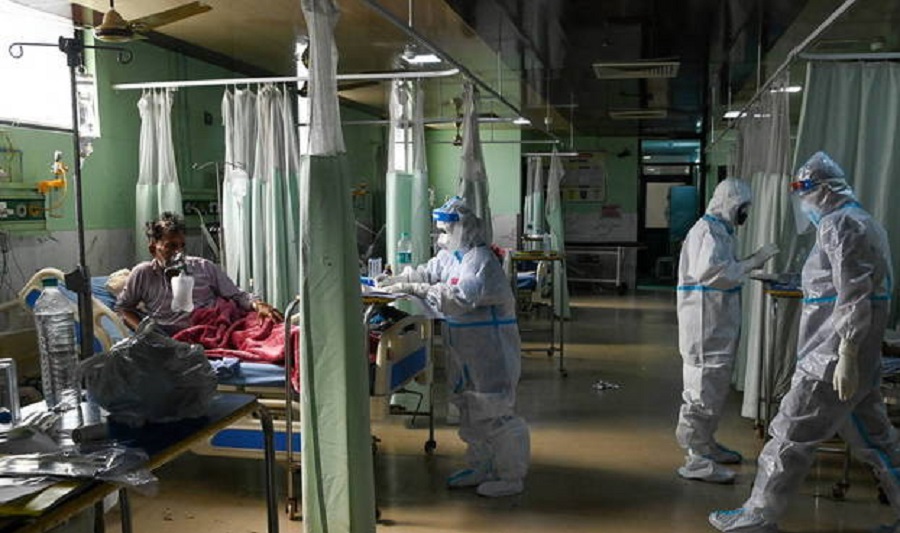RIO DE JANEIRO, BRAZIL – The global epicenter of the Covid-19 pandemic, registering over 10 million cases in the past 4 months alone, India is facing yet another complicating factor in treating its patients.
Doctors across the country are reporting a rise in cases of a very rare fungal infection among patients recovering or already recovered from the coronavirus.

Mucormycosis is the name of this disease, caused by exposure to a type of fungus commonly found in soil, plants, dung, and rotting fruits and vegetables. It affects the sinuses, brain and lungs and can be fatal in diabetics or in individuals with a weakened immune system.
Doctors believe that mucormycosis, which has a 50% mortality rate, can be triggered by the use of steroids, a key part of treatment for critically ill Covid-19 patients. The drugs reduce lung inflammation and help fight the impacts of the coronavirus, but they also reduce immunity and cause an increase in blood glucose rates. Thus, they create a favorable environment for fungal infection.
Doctor Akshay Nair, an eye surgeon in Mumbai, said he treated around 40 patients with the disease in April, many of them diabetics. Between December and February, 5 of his colleagues in 6 cities reported 58 cases of the infection, which typically appears 12 to 15 days after recovery from Covid-19.
Mumbai’s Sion hospital alone reported 24 cases of mucormycosis in the past 2 months, 4 times more than the annual average of 6 cases, said Renuka Bradoo, the hospital’s director of otolaryngology. Eleven people lost an eye and 6 died.
In the city of Bengaluru, doctor Raghuraj Hegde said that he usually sees no more than 1 or 2 cases of the disease per year. In the past week alone, there have been 19, several of them too weakened to undergo surgery.
The patients, many of them young, typically have symptoms such as nose and eye bleeds, eye pain, and drooping eyelids. As the condition progresses, there is loss of vision. Another common symptom is black spots on the nose.
Most patients reach the hospital at an advanced stage, and doctors often need to surgically remove the eye to contain the infection and prevent it from reaching the brain. The only effective medicine against the disease, the BBC points out, is an intravenous injection that costs 3,500 rupees (US$48) a dose and needs to be administered daily for 8 weeks.
Meanwhile, the pandemic is showing no signs of abating in the South Asian country. On Saturday, India reported over 4,000 deaths from Covid-19 in 24 hours and more than 400,000 new infections, although experts believe the official figures are greatly underestimated.
In an interview to AFP, World Health Organization (W.H.O.) chief scientist Soumya Swaminathan in India alerted that the B.1.617 variant, first detected in October, worsens the pandemic in her country. According to the expert, the strain is more contagious and with features that may render vaccines less effective.
The B.1.617 “has mutations that increase transmission and can also make it potentially resistant to antibodies developed by vaccination or natural infection,” she said. However, she stresses that the variant is not the only culprit for the dramatic increase in cases in India, which seems to have let its guard down too soon.
Over the past month, as the strain spread across all 28 states in the country, the rolling average of new cases increased by more than 5 times and that of deaths by over 8 times. Nevertheless, Prime Minister Narendra Modi, with an eye on the parliamentary elections, allowed 2 festivals and numerous overcrowded political rallies to take place without any protective measures, and even attended several of these events himself.
His government promoted ineffective treatments against the disease, while claiming that the pandemic was over. However, cases continued to gradually increase, until they exploded in April. “These first signs were ignored until (the transmissions) reached a vertical takeoff point,” said the scientist.
So far, India, the world’s largest vaccine producer, has immunized only 2% of its population with 2 doses. Despite efforts to expedite the campaign, the researcher alerts that it will take months, “perhaps years, to reach a rate of 70 to 80%” of the population immunized. In the meantime, she says, the tightening of sanitary measures and distancing are urgently called upon.
Source: Exame

